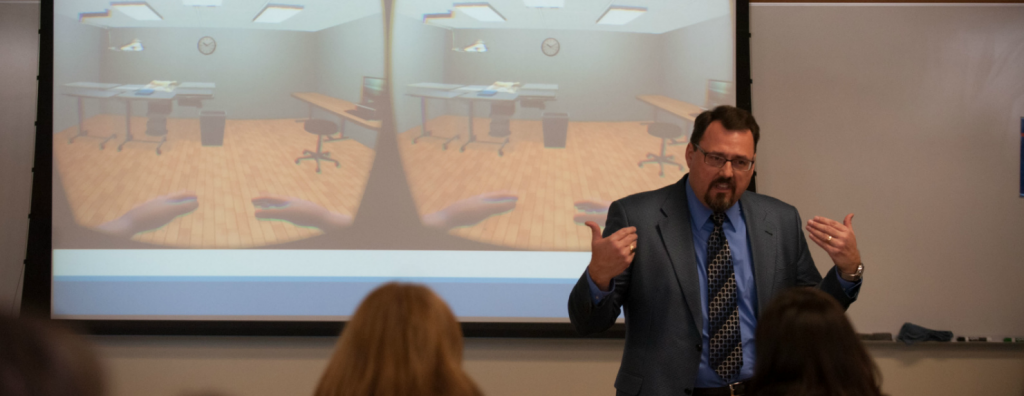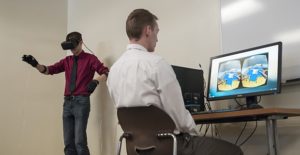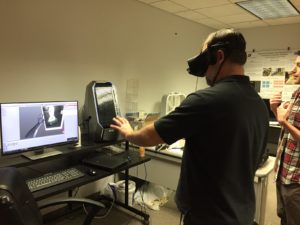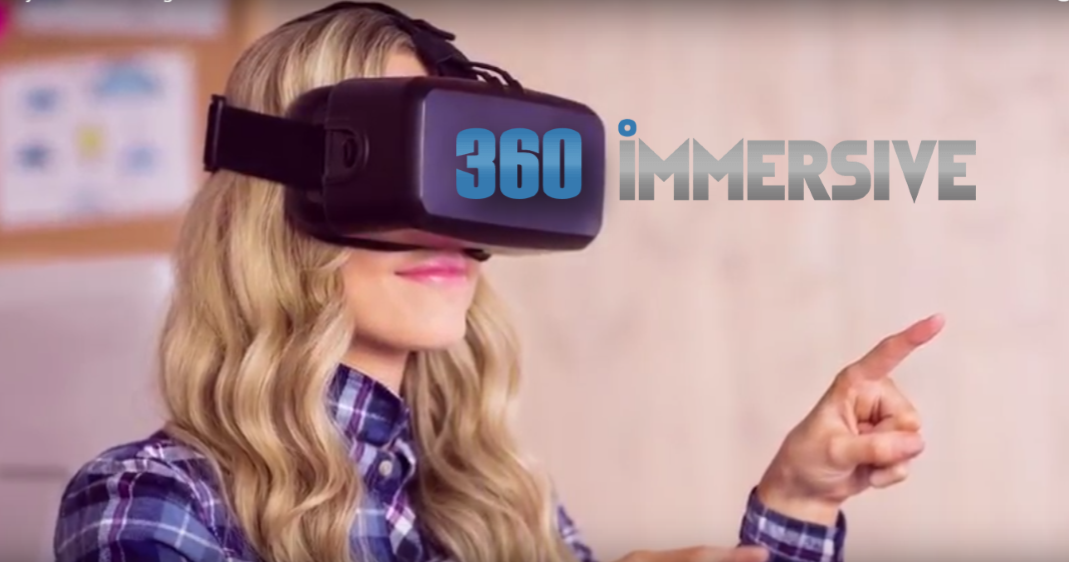
You may have heard some buzz about Boise State University’s new GIMM program. In its second (almost third) year of existence, it is proving to be a unique program addressing the growing and ever changing needs of the technology market. GIMM stands for Gaming, Interactive Media and Mobile Technology. The goal of the program is for students to graduate with the skill sets necessary “to produce and manage innovative hardware and software that increase the usability of and pioneer new applications” in technology platforms such as websites, tablets, smartphones, AR/VR and video streaming. When they graduate, students will be prepared to take on high demand positions such as mobile app developer, video game designer and web developer. As we all know, these are positions that are often hard to fill or find the right skill set for. GIMM is hoping to help solve some of these challenges and we recently had the chance to speak with Program Director Dr. Anthony Ellertson about the program.
So how are they preparing students to enter the workforce with the appropriate skill sets needed in the market? Ellertson says that there is a tremendous amount of focus within the program placed on portfolio creation. While grades are, of course, important, they ensure students are building their abilities and experience levels. By the time students graduate they have worked on at least two dozen projects both in group and individual settings. Students in their first year focus on 2D animation, interactive storytelling and several other areas. The goal is to have students continuously working on projects to increase their confidence and competence for handling project work. As we all know, when you’re in the workforce one has to be able to work through methodology, know how to deal with failure and at the same time not be daunted by it. By the time they reach their Junior year, students are asked to create a game. ALL of it. I mean EVERY aspect of the game. They have a year and a half to complete their game and they make their own contract which outlines what they’ll do and when they’ll finish it by. This is meant to really push the students as they have to learn a complete array of skills to put together a full game. After that, they work on their Senior Capstone Course which is in a large group setting. This is done in conjunction with an industry partner where they’ll take on large cutting edge projects where they refine their methodologies (ie. Agile) as well as their ability to work in larger teams. When students graduate they are adept at both the visual design aspects and the coding side. Dr. Ellertson realizes they’ll likely choose one path to go down, but he feels that knowing both sides makes them more well rounded employees, team members and eventually managers.

Showcasing the VR catheter lab. Photo Patrick Sweeney
We spent some time viewing projects students are working on and one of the ones we were quite curious about about was the Catheter Lab they built in partnership with the School of Nursing and St. Luke's Hospital. One of the challenges that hospitals and nursing schools face is proper training of catheter insertion. Twenty percent of secondary infections received in hospitals are related to catheters. Muscle memory is a critical part of the procedure and learning the number of steps that have to be taken for proper insertion is important. Students need to practice over and over. However, there usually aren’t enough mannequins in training programs for extensive practice. Added on top of this is the sheer cost; on the high end some mannequins can cost $65k each. The GIMM program set out to solve this issue by creating a virtual reality catheter program. The program currently gets students comfortable with the order of the steps and has them do the process over and over and over… Once the student gets comfortable they can then add other elements or distractions to the experience to make it simulate real life. The catheter lab addresses a multitude of constraints in training. The cost of one set-up is significantly lower than a mannequin, students can perform the procedure standing or sitting, and the location of the training can be done anywhere the computer and VR headset can be set up. They are now in their second iteration of the project in which they have gone from using haptic gloves to track hand movements to leveraging leap motion. They are now starting to expand this program out for third party participants to leverage.

A painting experience in its early stages for the "World Museum."
Another really cool project we discussed was the “World Museum” which will be housed in the new Fine Arts Building (scheduled for completion in 2019). The “World Museum” will be approximately 1,100 square feet of space dedicated to delivering art experiences in virtual reality and augmented reality. It will be a great space for local businesses to try the latest technology. GIMM recognizes that companies face a high cost when leveraging VR/AR equipment. Companies will be able to come and try it through GIMM to see if really meets their needs before they commit to purchasing it. As for the art experiences, GIMM will be taking on cutting edge technologies to produce cool experiences for the museum. While the facility doesn’t open until 2019, GIMM students will start working on projects over the next few months as they hope to open with a number of exhibits for people to experience. We were able to get a sneak peek at two of the projects in their early stages. In the first one (seen in the picture), the subject of the painting comes out and speaks to you about the work. You’re also able to see what’s behind the subject and get a feeling for what their environment was like. The second project we experienced was a sculpting simulator with a virtual chisel. This allows the user to create art using different materials (marble, stone etc.). They are still refining the experience, but it was quite fun playing with a chisel and hammer in VR! Boise State faculty will be providing content for the students to leverage in the space and they’ll continuously be pushing the limits to create unique experiences. Ellertson sees AR playing a lead role in the World Museum. They’ll likely have a wall of high-tech screens when you walk in and will leverage AR to overlay content on top of the screens. Since the project is still two years out, it is a little challenging to describe what it will be like as they recognize that the technology will continue to change and they’ll want to make sure they have the most up to date hardware. Having seen just a glimpse at what they’re working on, I can’t wait to see the experiences when they open the space to the public!

Trying out the chisel experience.
Summer is right around the corner and many students leave for summer break, but there will still be multiple projects happening at the GIMM lab. They’re working on a 360 documentary on Hells Canyon with Idaho Power. They shot video of the Snake River over Spring Break and were able to catch some great footage as the river is running at levels that haven’t seen in 30 years. They are also starting to think about how they may be able to extend their community to secondary students who are interested in this space but don’t have access to the resources. Could we possibly see some sort GIMM extension in local high schools and jr. highs? That is still to be determined, but how cool would that be? We are excited to see how the GIMM program continues to develop and the impact they’ll have in Idaho in this space. You know a program has a good thing going and a great culture when students show up on Friday nights at the lab for a potluck, music and work and some end up staying late into the night. If you’re spending your Friday evening at school, you’ve found something special!



Recent Comments